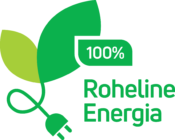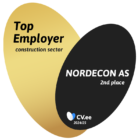The building of the apartment buildings of Uus-Tammelinna has turned out to be very successful for Nordecon AS, which enables the company to continue with the further development in the region of Uus-Tammelinna despite the saturated market in Tartu.
“At present, three buildings with 55 apartments have been completed in Savi street, three of the apartments are currently being unsold. Since this Uus-Tammelinna development has been very popular in the context of Tartu, we have also started building the fourth house in the beginning of November, and five apartments out of 20 have already been booked by now,” said Toomas Rell, the Head of the South-Estonia region for Nordecon AS
According to Toomas Rell, the apartment market in Tartu clearly shows that supply is exceeding demand and there are difficulties in realising both the wrongly priced and careless projects. “In my judgement, the positive sales of Uus-Tammelinna apartments is related to the quality building and well-thought solutions for customers – this is also confirmed by the direct feedback from the buyers of the apartments and inquires made by the interested people,” he noted.
Toomas Rell added that buying interest is also affected by the fact that in recent years not so many new apartments have been built in the region of Tammelinn in Tartu and also, the vicinity of Tartu University Hospital and school buildings plays some part in this.
Nordecon started building the new residential area in the streets of Savi and Haraka, in the southern part of Tammelinn in Tartu in spring 2014. By now, three apartment buildings have been completed, in total nine buildings are planned to be built in this region. The apartment buildings have three to five storeys, with 15 to 25 apartments, respectively. The architect of the buildings is Indrek Näkk from the architectural office INA.
The region of Tammelinn in Tartu is one of the first garden towns in Estonia that was designed based on the principle of a modern garden town. The plan of the garden town was completed in 1923. The building comprised two mixed principles, in addition to single-family houses apartment buildings were also designed to the part of the garden town close to the city, in the area between Riia and Tamme streets. The Estonian architectural history has compared the plan of the garden town of Tamme and its constructional outcome to the garden towns of Nõmme and Merivälja in Tallinn and the resorts region of Pärnu.









